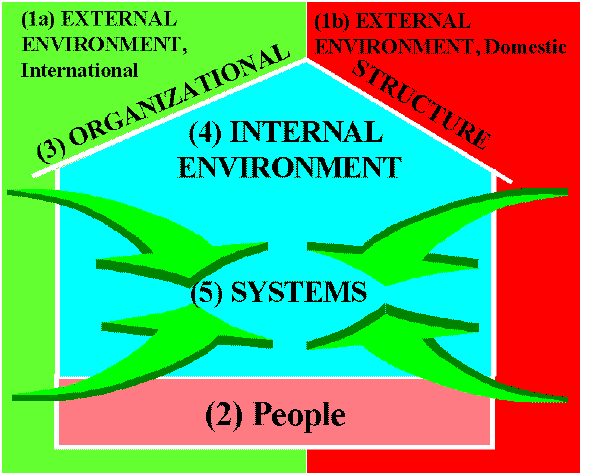Phase 3 of The Linked Management Models
The Drivers of Change
Being Prepared - How we can understand the effects of change and chaos on our organization
By Craig A. Stevens, PMP, CC and his students

If you want to truly understand something, try to change it. - Kurt Lewin
The behavior of one person may influence that person's world and it may also influence other people. - Norman R. F. Maier
A change in any one of these three elements (Activities, Interactions, and Sentiments) will produce some change in the other two. - George Casper Homans
Craig A. Stevens Intro to Using the Drivers of Change
Facilitated Craig A. StevensDuring a Panel Discussion for the Nashville/Middle Tennessee Chapter meeting of the PMI, PMO Local Interest Group (LIG).
Narrated PowerPoint Slides Explaining the Model
The Drivers of Change Model is the third phase of the linked management models and answers the question – How can we understand the effects of change and/or chaos on our organization?
If one could understand organizational elements that drive change, one could come closer to systematically forecasting how competitiveness will be affected by trends. An effective tool to enable us to think in terms of the "systems approach" to change is the "Westbrook Model." The Westbrook Model contains five elements that can be used to describe forces effecting organizations and also as a framework for us to take a systems approach to change within our organization. In this paper we will examine the process of using these five elements: External Environment, Internal Environment, Systems, Organizational Structure, and Behavior Theory. This paper will look at using the Westbrook Model to explain these elements and how they may drive change in each of the other elements within the model.
"BATTEN DOWN THE HATCHES,
A MONSTER OF A WAVE IS ON THE HORIZON!
ON THE HORIZON?
IT IS THE HORIZON! AND IT'S GOING TO ROLL OVER US!"
The Drivers of Change will look at the five elements required to understand what drives change within our organization. If we were to hear these words in our "organizational ship" we would want to know a couple of things fast. What is happening? When will it happen? Where is it coming from? What will it hit first? And…what other affects will it have on our company?
Enter the Westbrook Model -- Dr. Jerry Westbrook has developed a model to take a systems approach to explain how management systems fail to be implemented correctly in higher education. The Westbrook Model consists of the following organizational elements and is shown in Exhibit 1. (Westbrook, 1990)

External Environment,
Internal Environment,
Systems,
Behavioral Theory, and
Organization Structure
Westbrook, Jerry, "Westbrook Model," the Proceedings of the American Society for Engineering Education National Conference, 1990.
Dr. Jerry Westbrook developed the model to explain the effects of other organizational elements on implementing new management systems. We took this same idea, redesigned it and applied it to the organization as a whole in an approach that holistically integrates the entire organization. This is an important step in understanding change and allowing us to integrate an entire change management program. The Westbrook Stevens Model consists of the following organizational elements :

Sub-Step 1 - Understanding the External Environment (International and Domestic, Regulations, Etc.)
Sub-Step 2 - Understanding People, Building and Leading People and Behavior Science
Each of the Westbrook Stevens Model elements is
made up of other sub-elements; such as groups of people, systems, and/or
attributes that may crossover into other elements.
Each of the elements are inter-related and can affect the other elements within the model in either supportive or distracting ways. That is, each element has a relationship with the business’ effectiveness, efficiency (productivity), and/or quality and is either positively or negatively affected by each of the other elements. The affects of a change will bounce around the model's elements like a metal ball inside a pinball machine until it comes to rest waiting for the next change. Knowing this helps one to forecast and manage change.
Three systems thinking principles are boxed in below, from Peter Senge's book The Fifth Discipline, deal with the concept of the drivers of change model.






